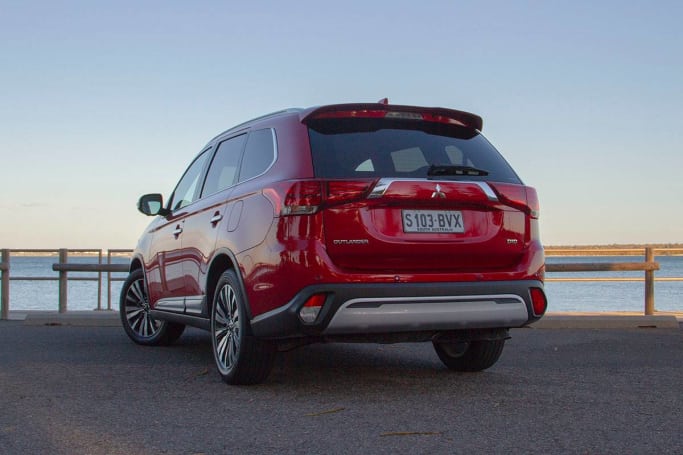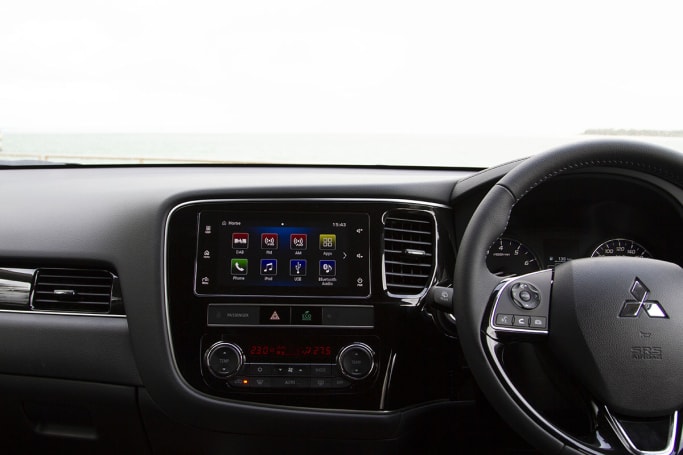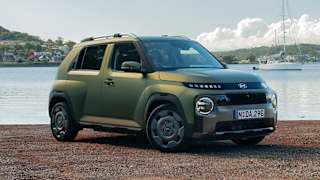The Outlander has always been reasonable value, and, with the departure of the Holden Captiva, is probably the best-value seven-seat SUV out there. Though I would argue it already held that title, because the Captiva wasn't much of a car.

Our Outlander model comparison covers the entire range. We'll cover how much each model will cost you using the price list (RRP) pricing. Prices have moved a little bit, and in the case of the PHEV, they've moved a lot - happily, in a southerly direction.
There are 13 distinct models in the MY19 Outlander range, which opens with the manual front-wheel-drive 2.0-litre petrol ES. The ES manual distinguishes itself by being the only of the trim levels to sneak in under the $30k mark, weighing in at $29,290. It's also the only one of the cars with a 2.0-litre four-cylinder engine under the bonnet.
It's a bit complicated here in the ES arena - once you're past the bargain-basement manual transmission model, you've a choice of 4x2 and AWD versions, and the answer to the how many seats question is many, with five- and seven-seat versions available. The ES CVT 2WD seven seater is $31,290, the ADAS-equipped CVT five seater is $32,790 (more of ADAS in the Safety section), the CVT AWD seven seater is $33,790 and the CVT 4WD ADAS five seater is $35,290. That's slightly bewildering.
But wait, there's more. The plug-in hybrid PHEV jumps to a much cheaper-than-before $45,990, the one with the ADAS package is $47,990. It seems curious you can't have an ADAS AWD seven-seater, but there you go.
The ES specifications include 18-inch rims, a six-speaker sound system, reversing camera, central locking with automatic door lock, climate control air-conditioner, cruise control, leather gearshift and steering wheel, power mirrors, cloth trim and a full-size spare tyre. When you go for the PHEV, you also pick up reverse parking sensors to soften the extra cost.
Things are a bit less complicated in the LS range. The front-wheel-drive LS CVT starts at $33,790, and the AWD CVT at $36,290. The LS also introduces the 2.2-litre diesel with a proper automatic transmission at $39,790. Lastly, the PHEV version is $50,490.
To the ES spec you can add the ADAS package, auto headlights and wipers, partial leather interior with micro-suede inserts, keyless entry and start with smart key, electric front seats, heated and folding power mirrors and an electrochromatic rear vision mirror.

Next up is the premium-packaged Exceed, which comprises the 2.4-litre petrol ($42,290), the 2.2-litre diesel ($45,790), and the PHEV, which is $53,990 - a handy $1500 cheaper than the MY18.5. version.
You can expect 18-inch alloy wheels, and on top of the LS's spec is a sunroof, full-leather interior, front and side cameras, front and rear parking sensors, LED headlights, daytime running lights, rear privacy glass, power tailgate (a very useful convenience feature), rear spoiler and rear cross-traffic alert. You do, however, lose the spare tyre.
The same multimedia system does duties across the whole range. The ho-hum infotainment software is supported by Apple CarPlay for iPhone and Android Auto. There is also DAB radio, six speakers and bluetooth. There is no radio CD player (but there is AM/FM and digital), and no inbuilt GPS navigation system. The 7.0-inch touchscreen, familiar from the ASX, is of the "it's alright, I guess" approach to touchscreen hardware. Looks good, though.
The accessories list has all the usual things: over-priced floor mats (a choice of carpet and rubber), nudge bar (but no bull bar), nudge bar with integrated light bar, cargo barrier, tow bar, roof rack and boot liner.
Absent from the list are a snorkel, DVD player, subwoofer, winch, tonneau cover, side steps, anything resembling a luxury pack, rear seat entertainment system, heated steering wheel, seat belt extender, lift kit or park assist. No doubt a good chunk of that list is available from aftermarket suppliers.

Mitsubishi hasn't gone mad with the colours - black, red, silver, pearl white, ironbark (brown) and titanium (grey). Only Solid White is a freebie, the rest are $590 extra. If you want blue or orange, you're out of luck.
Where is the Mitsubishi Outlander built? It's built in Japan.


















